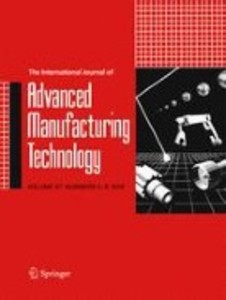IRAWAN, DODDY (2018) A new methodology to calculate the cooling law of steel mill lamination coils. The International Journal of Advanced Manufacturing Technology, 97. pp. 1873-1884. ISSN Print: 0268-3768 Electronic: 1433-3015
|
Text
1 - Dokumen Jurnal.pdf - Published Version Download (1MB) | Preview |
|
|
Text
A new methodology to calculate the cooling law of steel mill laminati_ - link.springer.com.pdf - Published Version Download (1MB) | Preview |
|
![[img]](http://repository.unmuhpnk.ac.id/2058/3.hassmallThumbnailVersion/Covers.jpg)
|
Image
Covers.jpg - Published Version Download (8kB) | Preview |
|
|
Text
Corresponding jurnal Manufaktur.pdf Download (151kB) | Preview |
Abstract
In the hot-rolled steel production processes, the cooling control after finishing rolling plays an important role on the final microstructure and mechanical properties of the product. Steel coils produced after lamination must be cooled from a high temperature to the ambient temperature, to be transported and sold. Usually, the coil is stored in a warehouse until it reaches the ambient temperature. Cooling process takes between 4 and 6 days, depending on weather conditions. A new methodology to obtain the coil cooling law has been developed in this paper. Numerical models were used to simulate and study the rate of the coil cooling and to obtain the values of the parameters involved in the cooling law. The geometry of the coil is a hollow cylinder with a height between 1.6 and 1.8 m and an outer diameter of about 0.9 m. Simulations of the coil cooling process were performed by using CFD techniques with ANSYS FLUENT software in transient conditions for 2D (two-dimensional) and 3D (three-dimensional) geometries to obtain the optimal rate of temperature decrease. Vertical and horizontal arrangements of the coils and also a different number of coils and rows were studied. A new equation (cooling law) based on logarithmic and arctangent terms was obtained. This equation describes conduction, convection, and radiations effects that have been proposed and verified, considering the boundary restrictions of the problem.
| Item Type: | Article |
|---|---|
| Subjects: | - Teknik Mesin |
| Divisions: | Fakultas Teknik dan Ilmu Komputer > Prodi Teknik Mesin |
| Depositing User: | S.IP., MA Dwi Cahyo Prasetyo |
| Date Deposited: | 10 Apr 2023 03:13 |
| Last Modified: | 14 Apr 2023 06:00 |
| URI: | http://repository.unmuhpnk.ac.id/id/eprint/2058 |
Actions (login required)
 |
View Item |


